Master IW, also Monogramist I.W., was a Czech or Saxon Renaissance painter, trained in the workshop of Lucas Cranach the Elder, active between 1520 and 1550 mainly in north-west Bohemia.
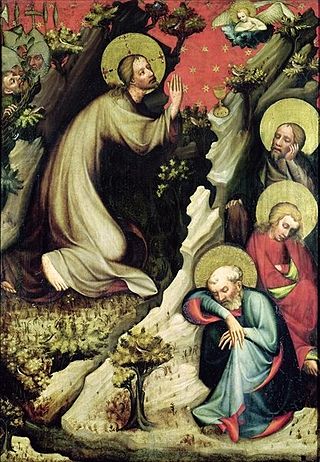
The Třeboň Altarpiece, also known as Wittingau altarpiece, is one of the most important works of European Gothic panel painting. Of the original large altarpiece retable created in about 1380 by an anonymous Gothic painter called the Master of the Třeboň Altarpiece, three wings, painted on both sides, have survived. The altarpiece is one of the works that helped towards the emergence of the International Gothic style and which influenced the development of art in a broad European context.

The St. Vitus Madonna comes from the treasure of St. Vitus Cathedral in Prague and is exhibited in its original frame in the permanent collection of the National Gallery in Prague.

The Roudnice Madonna is a work by the Bohemian Master of the Třeboň Altarpiece from the period between 1385 and 1390. It came from the monastery of the Augustinian Canons in Roudnice nad Labem or from the Roudnice summer residence of Archbishop Jan of Jenštejn. The painting has been exhibited since 1946 in the permanent collection of medieval art at the National Gallery in Prague.

The Death of the Virgin Mary of Košátky is a Bohemian panel painting from the period around 1340–1350.
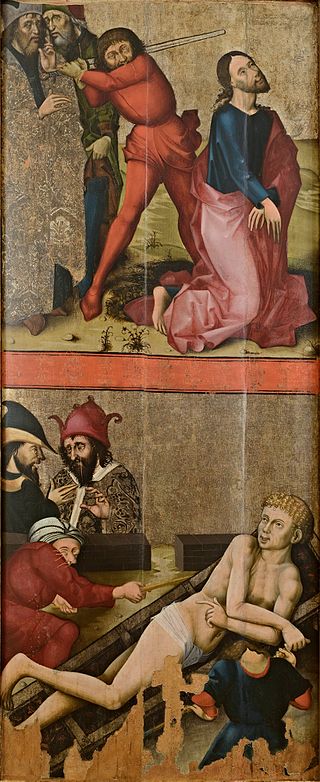
The Altar Wings of Roudníky are two surviving wings of late Gothic retable, which probably originated in one of Prague's contemporary workshops for a village Utraquist village parish church. The altar wings exhibited at the Hussite Museum in Tábor have the status of a national cultural monument in the Czech Republic.

The Vyšší Brod (Hohenfurth) cycle, ranks among the most important monuments of European Gothic painting. It is made up of nine panel paintings depicting scenes from the Life of Christ, covering his childhood, Passion and resurrection. These paintings were made between 1345 and 1350 in the workshop of the Master of Vyšší Brod that was most probably based in Prague. The pictures were either meant for a square altar retable or else they decorated the choir partition of the church of the Cistercian Abbey in Vyšší Brod.
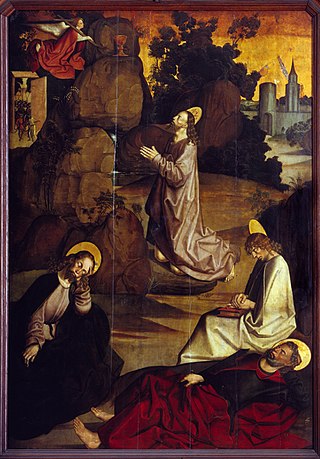
The Litoměřice Altarpiece was a large altar retable, in all likelihood with two pairs of movable wings and two pairs of fixed ones. From these wings, six panels have survived, two of which are painted on both sides. The movable wings on the left-hand side of the altar are presumed lost. The altar wing depicting Christ on the Mount of Olives belongs to the Diocese of Litoměřice, while the other panels are owned by the Regional Museum in Litoměřice. It is the largest surviving set of panel paintings by an anonymous late Gothic and early Renaissance painter called the Master of the Litoměřice Altarpiece. The altarpiece is part of the permanent collection of the North Bohemian Gallery of Fine Art in Litoměřice.

The Adoration of Our Lord from Hluboká is a panel painting dating from the period around 1380, ascribed to the Master of the Třeboň Altarpiece or his workshop. It is on display in the permanent collection of the Aleš South Bohemian Gallery in Hluboká nad Vltavou as a loan from National Heritage Institute in České Budějovice.
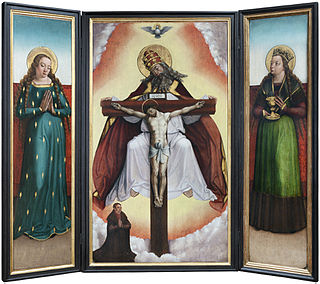
The Altarpiece of the Holy Trinity is a work by the Master of the Litoměřice Altarpiece dating from c. 1520. It is on display in the permanent collection of the National Gallery in Prague.

The St Catherine Altarpiece is a set of panel paintings from the period around 1515 that is ascribed to the workshop of the Master of the Litoměřice Altarpiece. A total of six panel paintings survive from the original retable: one wing painted on both sides and two panels painted on one side in the collection of the National Gallery in Prague and two panels in the private collection of G. Schäfer (Schweinfurt).

The Prague Altarpiece of Lucas Cranach the Elder portrays the Virgin Mary and female saints was, at the time it was made, the second most important altarpiece in St Vitus Cathedral. The altarpiece was most probably brought to Prague as a commission by Emperor Maximilian I. The reason for this could have been the betrothal of his granddaughter Mary to Louis II of Hungary, the engagement of Ferdinand I and Anna Jagiellon (1515) or the coronation of Mary of Habsburg as Queen of Bohemia (1522). A hundred years later, in 1619, the altarpiece fell victim to Calvinist iconoclasm. The figures of the female saints were cut out of it and its central part was destroyed.

Saint Matthew the Evangelist is an oil tempera on beech board painting by Bohemian painter Master Theodoric. It forms an almost symmetrical counterpart to the image of Saint Luke on the altar wall in the Chapel of the Holy Cross. It is an exceptionally high quality painting by Master Theodoric. The painting is exhibited in the collection of medieval art of the National Gallery in Prague.
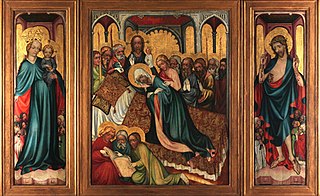
The Roudnice Altarpiece is a three-part winged altar from the provost's church in Roudnice nad Labem, one of the oldest completely preserved Gothic retables from the period around 1410-1420. It is on display in the permanent exhibition of the National Gallery in Prague.

Crucifixion from Nové Sady, is part of a larger altar polyptych called the Rajhrad Altarpiece. Its author is the last important personality of Czech panel painting of the pre-Hussite period, known as the Master of the Rajhrad Altarpiece. The painting is on display in the permanent exhibition of the National Gallery in Prague.

The Velhartice Ark, dating from 1490 to 1500, is a completely preserved late-Gothic altar from Bohemia. The altar is exceptional in the quality of its carving. It was originally commissioned for the parish church of the Nativity of the Virgin Mary in Velhartice in south-west Bohemia, where it probably stood on the mensa of the main altar. It is on display in the exposition of medieval art of the National Gallery in Prague.

The Ark of Doudleby (1494) is a set of three double-sided painted panels that were part of a winged altar, the centre of which was probably a cabinet with a statue of Pieta. This incompletely preserved altar is the finest set of late Gothic paintings in the collection of the Aleš South Bohemian Gallery in Hluboká nad Vltavou.

Puchner's Ark is a Gothic retable commissioned in 1482 by Nikolaus Puchner, Grand Master of the Knights of the Cross with the Red Star, for the church of St. Francis of Assisi in Prague's Old Town. The anonymous author of the panel paintings is referred to as the Master of the Puchner Altar. Part of the altar is on display in the National Gallery in Prague.
The Votive Painting from Šopka (1530) is the work of an anonymous disciple of Lucas Cranach the Elder, who worked in north-west Bohemia and is referred to by the initials with which he signed his paintings as Master IW. The painting was discovered at the end of the 19th century in the parish church, formerly the Augustinian Monastery Church of St. Laurence in Šopka and is exhibited in the Gallery and Museum of the Litoměřice Diocese.
Master of the Chudenice Altarpiece was a Czech painter active in Prague at the turn of the late Gothic and early Renaissance.





















